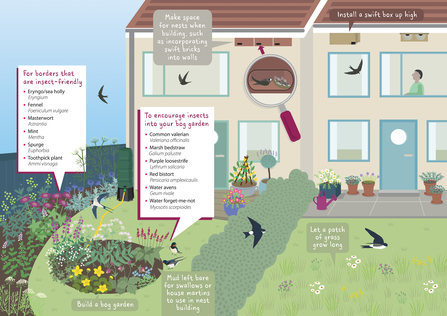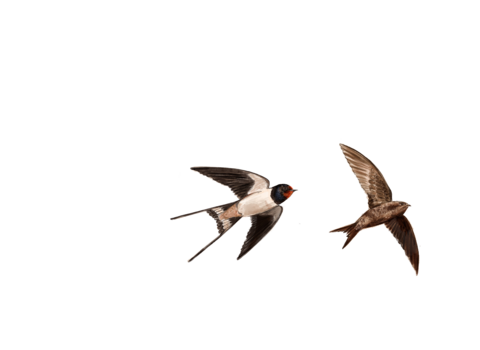Gardeners are being encouraged to install nest boxes and create habitats that boost insect numbers to help swallows, swifts, and martins as part of a new campaign.
Wild About Highflyers is a joint initiative by The Wildlife Trusts and the Royal Horticultural Society’s (RHS) Wild About Gardens campaign that aims to boost numbers of these charismatic migratory birds.
Swifts and house martins were recently added to the UK Red List, having suffered serious declines in recent decades. It is estimated that almost 60% of UK swifts have disappeared over the last 25 years.
Huge declines of insects, habitat loss, and the impacts of climate change – with extreme weather affecting breeding cycles and migration – are the main challenges affecting migratory birds.
A new campaign guide provides gardeners with tips on how they can help swallows, swifts, and martins. Suggestions include:
- Creating a ‘bog garden’ with plants like marsh-bedstraw and purple loosestrife. Bog gardens provide valuable habitat for frogs, dragonflies, and a wealth of insects, as well as materials that swallows and house martins can use to build nests.
- Adding a swift box to an existing house or including a swift brick in any kind of new build. Ideally, swift boxes face north/north-east to help regulate the internal temperature and are at least five metres above ground.
- Letting a patch of grass grow long, providing vital habitat and food for insects and other wildlife.


